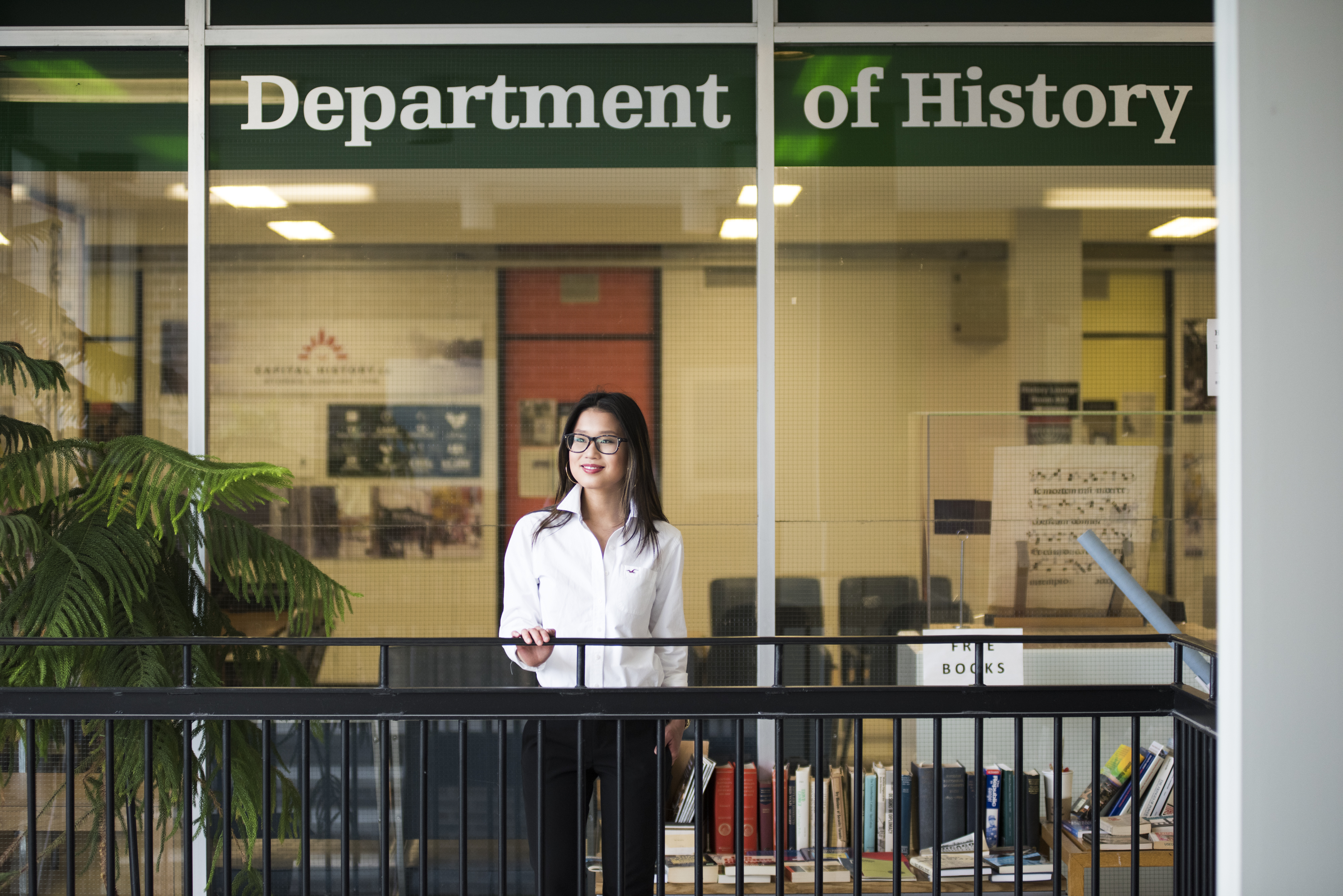–The following story was written by Nick Ward.
 From Classroom to House of Commons
From Classroom to House of Commons
Emilie Lanthier’s foray into Canadian politics through Daughters of the Vote is but one of her many accomplishments. At Carleton University, she is a successful and engaged student, and she credits a lot of her growth to the meaningful relationships she cultivated as an undergrad.
“My experience at Carleton has been stellar. Carleton has offered me a superb academic experience – one that was also tempered by a personal aspect that you can’t always get at bigger universities. There’s a warm, encouraging, community vibe,” says Lanthier.
“The History Department, in particular, has always been tremendously helpful and supportive, which goes a long way as you deal with the daily pressure of being a university student.”
“I often speak with my friends who attend other universities, and the fruitful personal relationships I’ve made with faculty seem like a feature mostly unique to Carleton.”
Carleton’s First-Year Seminars Uncovered her Love of Fashion
Another feature mostly unique to Carleton is the First-Year Seminar (FYSM) courses — small classes devised to allow first-year students the opportunity to discuss and research topics of interest in a particular subject area. While most university students are not afforded this collaborative and intimate setting until third or fourth-year, Carleton BA students get this chance as soon as they begin post-secondary.
Lanthier believes taking the FYSM class Empire and Imperialism taught by history professor Chinnaiah Jangam helped prepare her to exceed expectations as a university student.
“Being herded into these huge 500 person classrooms can be a bit daunting. Taking an FYSM helped me adapt to the post-secondary lifestyle.”
Not only did her FYSM help acclimatize her to university life, but it allowed her to discover her research passion — the study of art, artifacts, and clothing.
“I have always loved fashion and material culture. I use it as a way to express myself and be creative, so to learn that this was a possible area of inquiry for my academic career was monumental for me,” says Lanthier.
For anyone who has met Lanthier, her zealousness for fashion, culture, and art is very obvious. History Professor Susan Whitney recalls the time Lanthier made a presentation in her class on Paris in the Jazz Age wearing a black dress that she deliberately chose as an homage to Coco Chanel. “She really would not have looked out of place in 1920s Paris,” remarks Prof. Whitney.
Throughout her undergraduate degree, Lanthier strategically took courses which correlated with her interest, and as she did so, she came to realize that in researching fashion, a lot can be understood about the broader social context in a given period — from politics to economic systems, to social change.